Fine-Tuning White Balance
At settings other than K (Choose color temp.), white balance can be “fine-tuned” to compensate for variations in the color of the light source or to introduce a deliberate color cast into an image.
-
Display fine-tuning options.
Highlight a white balance option and press 2 (if a sub-menu is displayed, select the desired option and press 2 again to display fine-tuning options; for information on fine-tuning preset manual white balance, see “Fine-Tuning Preset Manual White Balance”, 0 Fine-Tuning Preset White Balance).
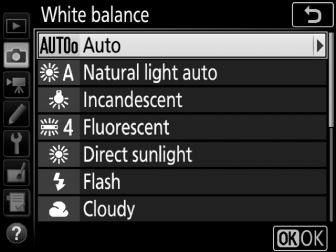
-
Fine-tune white balance.
Use the multi selector to fine-tune white balance. White balance can be fine-tuned on the amber (A)–blue (B) axis in steps of 0.5 and the green (G)–magenta (M) axis in steps of 0.25. The horizontal (amber-blue) axis corresponds to color temperature, while the vertical (green-magenta) axis has the similar effects to the corresponding color compensation (CC) filters. The horizontal axis is ruled in increments equivalent to about 5 mired, the vertical axis in increments of about 0.05 diffuse density units.
Coordinates
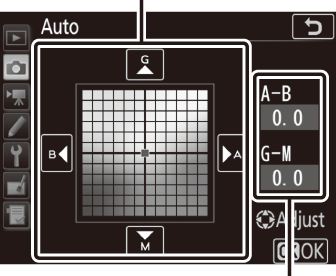
Adjustment
-
Press J.
Press J to save settings and return to the photo shooting menu. If white balance has been fine-tuned, an asterisk (“U”) will be displayed in the control panel.
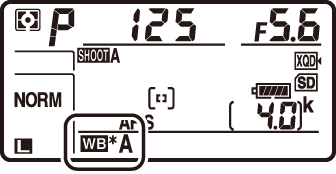
Fine-Tuning in Live View
To fine-tune white balance during live view, hold the U button while using the multi selector. Press 4 or 2 for Amber–Blue and 1 or 3 for Green–Magenta.
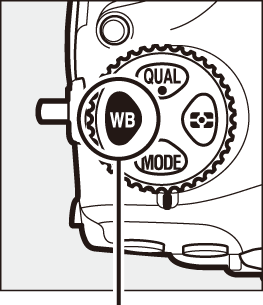
U button

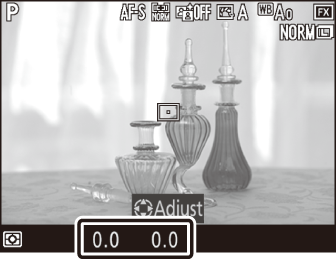
White Balance Fine-Tuning
The colors on the fine-tuning axes are relative, not absolute. For example, moving the cursor to B (blue) when a “warm” setting such as J (Incandescent) is selected for white balance will make photographs slightly “colder” but will not actually make them blue.
“Mired”
Any given change in color temperature produces a greater difference in color at low color temperatures than it would at higher color temperatures. For example, a change of 1000 K produces a much greater change in color at 3000 K than at 6000 K. Mired, calculated by multiplying the inverse of the color temperature by 10 6, is a measure of color temperature that takes such variation into account, and as such is the unit used in color-temperature compensation filters. E.g.:
- 4000 K–3000 K (a difference of 1000 K)=83 mired
- 7000 K–6000 K (a difference of 1000 K)=24 mired
